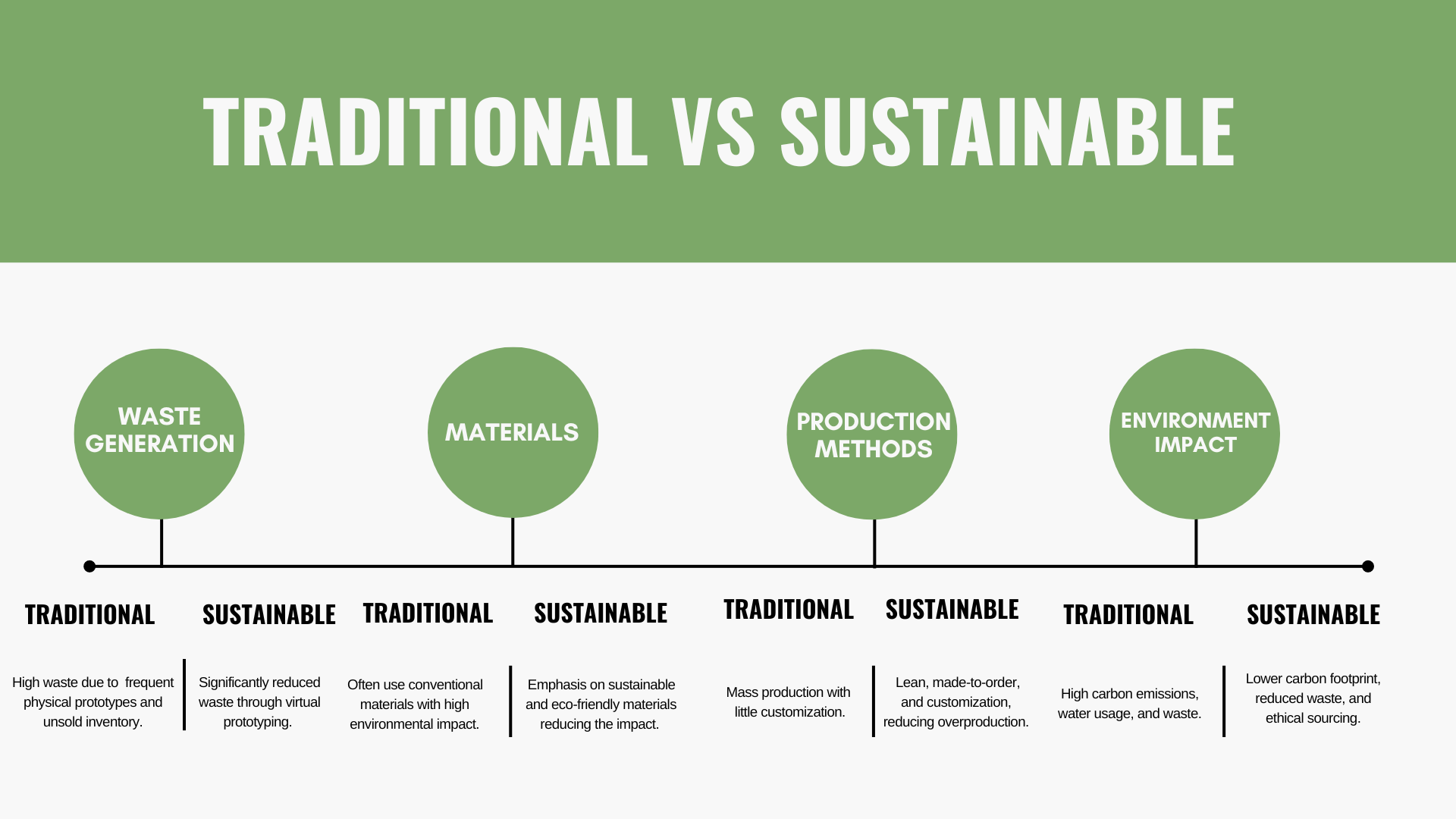Introduction to 3D Digital Fashion
In the ever-evolving world of fashion, the collaboration of technology and style has birthed a revolutionary trend: 3D digital fashion. This cutting-edge phenomenon has begun to reshape not only the way we create and consume fashion, but also how it is taught and cultivated in colleges and universities around the globe.
In this article, we delve into the profound impact of 3D digital fashion on both the industry and educational institutions, exploring the remarkable changes it has brought to design, production, sustainability, and what it means to be fashionable in the 21st century.
What is 3D digital fashion, and how does it differ from traditional fashion design?
3D digital fashion is a modern approach to fashion design that utilizes computer-generated 3D models and simulations to create and visualize clothing. It differs from traditional fashion design by reducing the need for physical prototypes and enabling designers to work in a virtual environment.
Transforming Fashion Production
One of the most significant impacts of 3D digital fashion is its ability to transform the production process. Traditional fashion design involved numerous iterations and physical prototypes, leading to substantial material waste. Designers can now create and visualize garments in a virtual space, reducing the need for physical samples. This not only speeds up the design process but also reduces environmental impact.
How the fashion industry is adopting 3D digital fashion for more sustainability and efficiency.
Reduced Material Waste ♻️
Virtual prototyping allows designers to create and test garments in a virtual environment, reducing the need for physical samples. This significantly cuts down on material waste and helps the fashion industry embrace more sustainable practices.
Sustainable Material Exploration 🌿
Designers can use 3D software to experiment with sustainable materials and production methods without physical resources, encouraging the use of eco-friendly fabrics and promoting environmentally responsible design.
Made-to-Order Production ✅
3D technology enables made-to-order production, where garments are produced only when an order is placed. This approach minimizes overproduction and reduces excess inventory, a major source of waste in traditional fashion.
Streamlined Design Processes 📈
The digital design process is more efficient, allowing designers to work on multiple iterations simultaneously and make quick adjustments. This reduces the time it takes to bring a design from concept to market and supports sustainable practices.
Sustainable Supply Chain 🏭
3D fashion technology can integrate with supply chain management systems, offering better traceability of materials and products. This transparency aids sustainability efforts by ensuring ethical sourcing and responsible production.
Virtual Fashion Showrooms 🖥️
Brands can showcase their collections in 3D virtual showrooms, reducing the need for physical fashion shows and the associated carbon footprint from travel and event logistics, making the industry more sustainable and accessible.
Digital Fit and Sizing 👕
3D tools allow for precise sizing and fit adjustments, which reduces the rate of returns due to sizing issues. This minimizes the environmental impact associated with return shipping and the disposal of returned items.
Sustainability Reporting 📊
These systems can generate data on material usage and production processes, facilitating sustainability reporting and helping brands make informed decisions to reduce their environmental impact and improve transparency.
Collaborations and Innovation 🤝
The fashion industry is collaborating with technology companies and educational institutions to innovate further. These partnerships lead to the development of sustainable solutions and foster a new wave of creativity.
Reduced Carbon Footprint 💨
By reducing the reliance on physical samples, the fashion industry can cut down on carbon emissions from production, transportation, and waste disposal, contributing to efforts to address climate change.
Want to learn and master 3D Digital Fashion?
The best platform is Learn 3D Fashion. Here’s what you need!
Learn 3D-Fashion Platform is the #1 platform for learning 3D Digital fashion. With a remarkable student base exceeding 2800+ individuals from over 10+ countries, our platform has attracted esteemed brands and institutions including NIKE, Harvard, FIT, and UAL.
Check Course!Traditional Vs Sustainable

How is 3D Digital Fashion helping fashion design students in colleges?
3D digital fashion is empowering college students in the field of fashion by revolutionizing their learning experience. Through this technology, students can foster creativity without the constraints of physical prototypes, streamline design processes, explore sustainable practices, master essential digital tools, and engage in collaborative, innovative projects.
By seamlessly integrating this skill into their education, students can enhance their design skills and prepare for a technology-driven, sustainable, and innovative future in the fashion industry.
There are many articles explaining how the 3D dynamic fashion design industry has brought a change in the online platform development using digital technology and its potential in online platforms. A few articles and research papers are also published on the same:
Conclusion
In conclusion, 3D digital fashion is reshaping the very fabric of the fashion industry and fashion education. As we’ve explored throughout this article, its profound impact is evident in the strides made toward sustainability, efficiency, and innovation.
Fashion students, armed with 3D technology, are not merely learners; they are pioneers driving positive change. They are reducing waste, championing sustainable practices, and mastering the digital tools that will define the future of fashion.
This transformative journey is a testament to the power of technology and education. It fosters a fashion industry that is stylish, responsible and ready to meet the challenges of tomorrow. As this skill continues to evolve, it will undoubtedly be at the forefront of a new era in fashion, one where creativity knows no bounds, waste is minimized, and the runway of sustainability meets the cutting edge of design.
